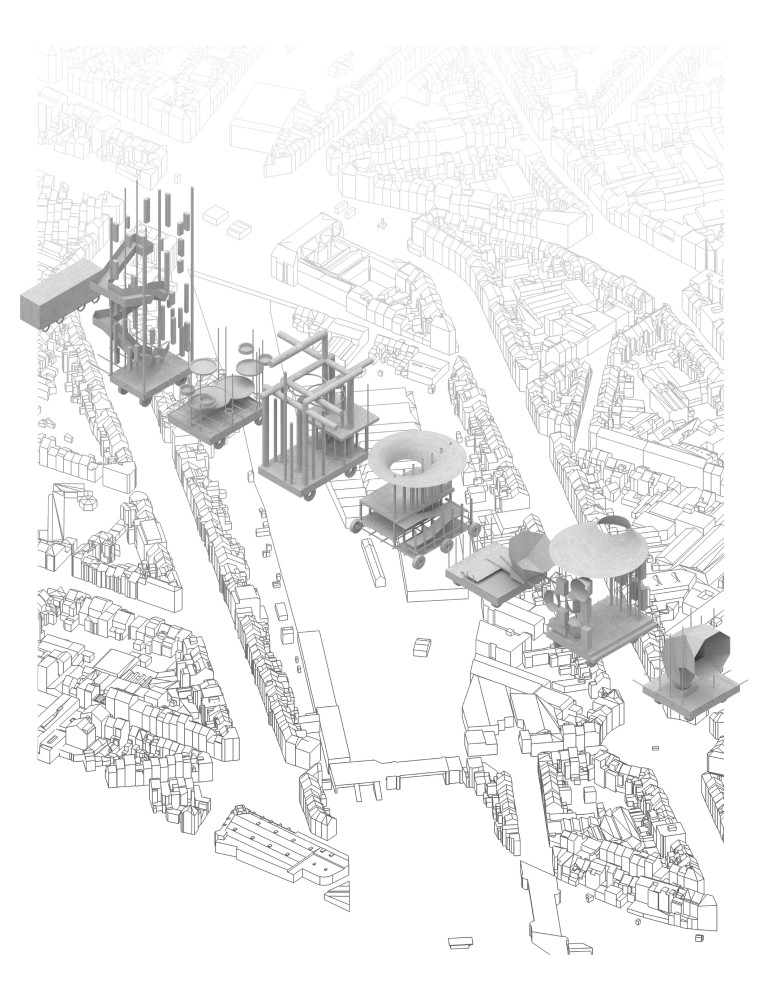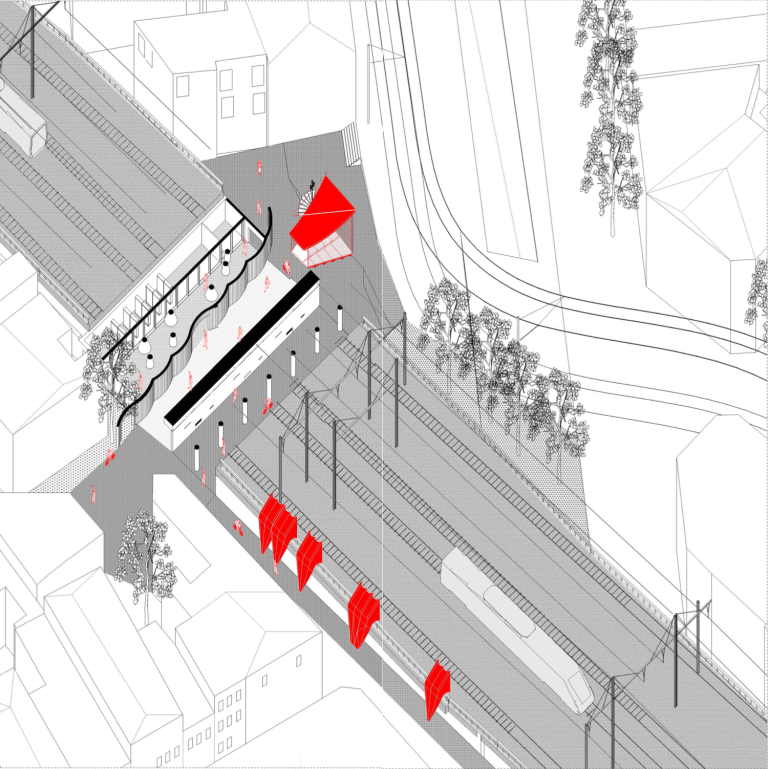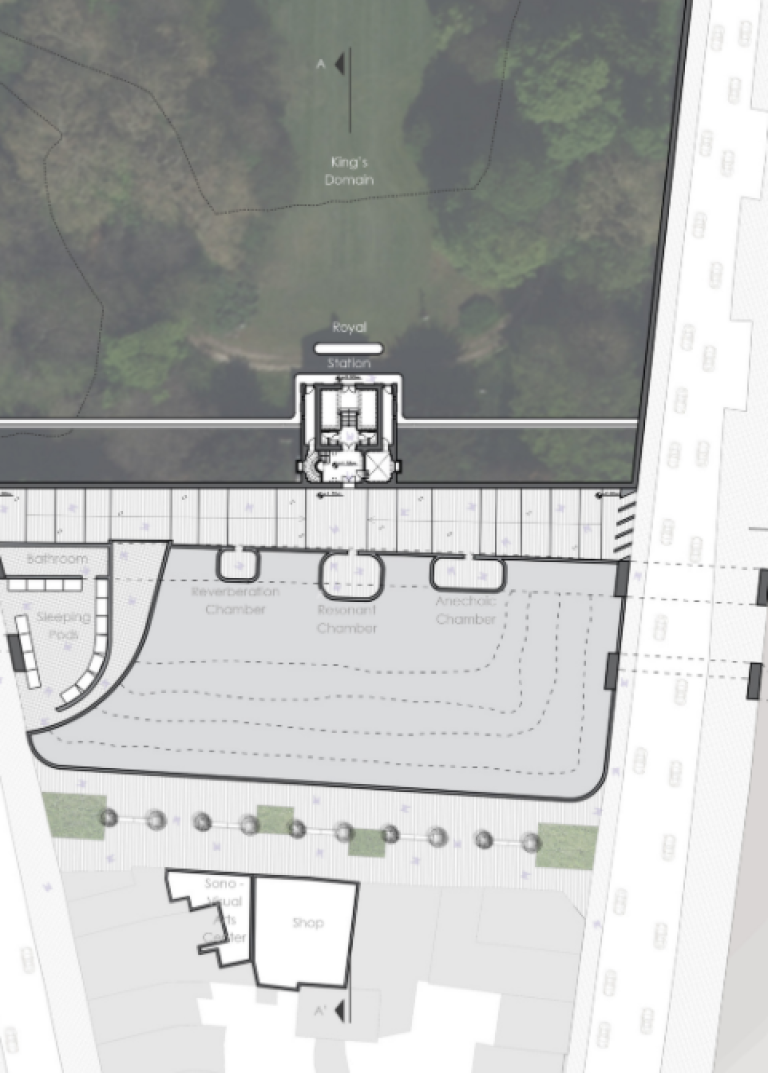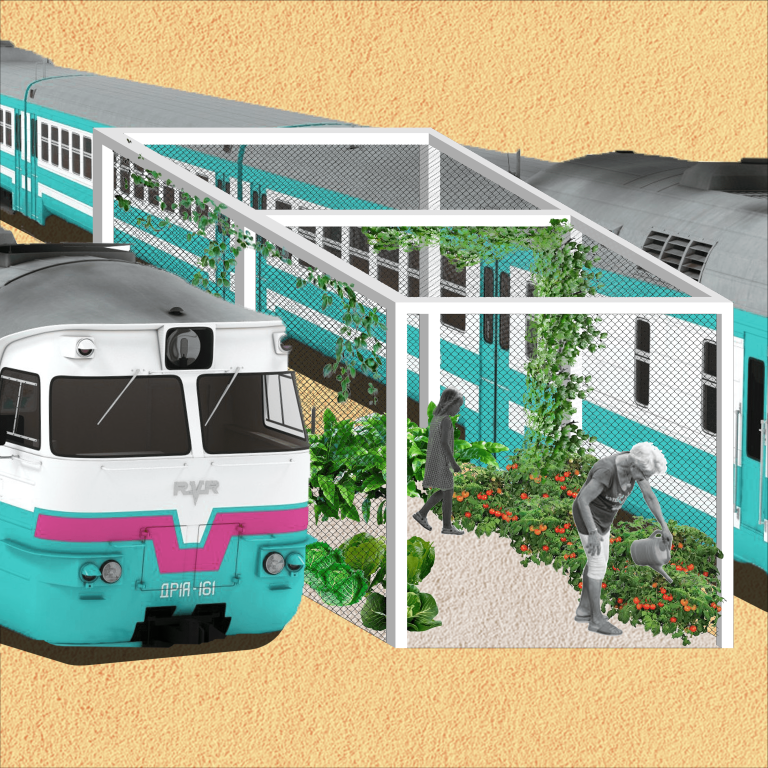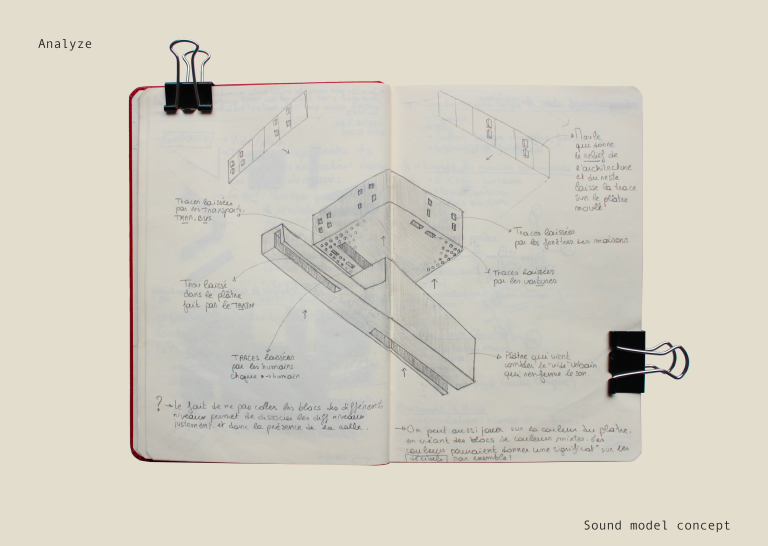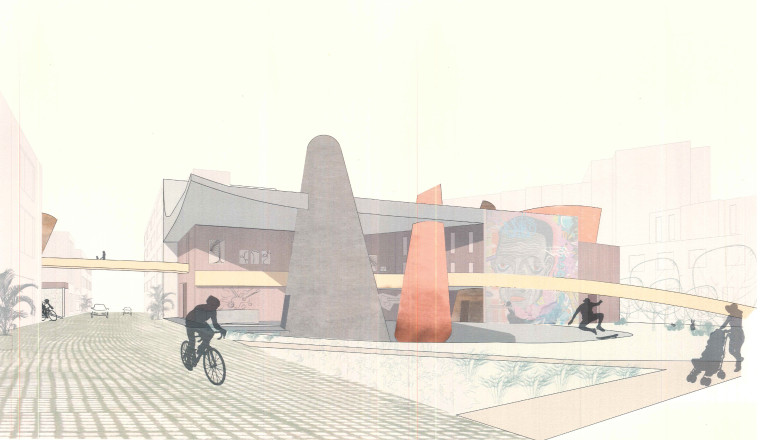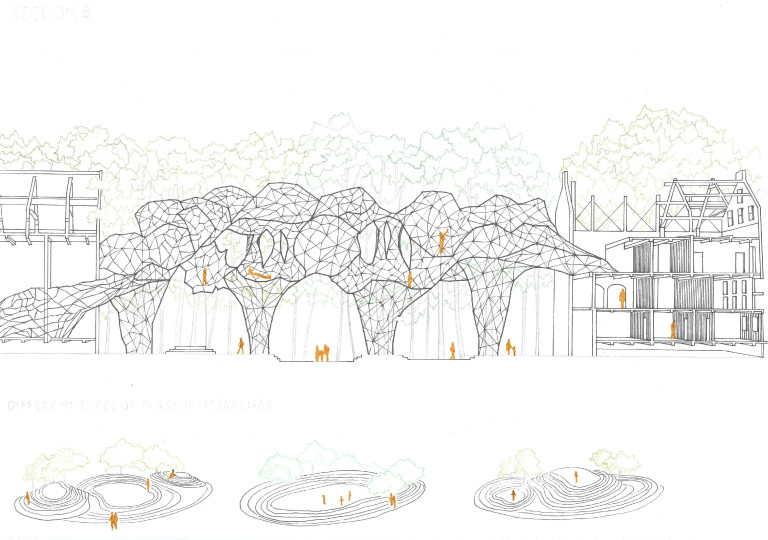Titular: Prof. Dr. Burak Pak Teachers: Prof. Dr. Burak Pak – Caroline Claus
I. Studio_L28 as Critical Spatial Practice Understanding the open space of an urban railway area in transition as a discontinuum of sonic and vibrational possibilities determined by more actants than human sounds, encouraged a revision of dominant sonic approaches, method and tools used in the urban design process as we know it. A decentering of the human sense and perspective seems to have implications for the urban design it constrains.
- What trans-disciplinary design perspective is needed to create the portals to these new dimensions, how does a non-human thinking serve to activate (non) human agency in a context of infrastructural transformation?
Following Goodman in his theoretical work on sonic warfare, we suggest adopting Augoyard and Henri Torgue’s sonic ecology for our practice-based research project on a critical sonic urbanism. From a questioning of the ontological turn in sound studies the research focuses on the following positions and propositions:
- human and non-human actants co-constitute a discontinuum of sonic and vibrational possibilities,
- a critical sonic urbanism necessitates an a-disciplinary rethinking of sonic methods and forms,
- (sonic) vibrations as design material open up to a re-negotiation of urban transition.
Studio_L28 is conceived as a practice for counteracting situations in the L28 planning process where sonic awareness and sound design strategies are limited to noise control. To break free from prevailing modes of urbanism and urban architecture which typically focus on sonic risk and vibrational nuisance, we constitute an a-disciplinary working practice exploiting the productive encounters between different disciplines. While being about a network, Studio_L28 represents itself as a networked practice in itself. Through interdisciplinary network practice we investigate how we as practitioners can learn from different disciplines, and how we can formulate it into a new way of operating.
Detailed description is accesible via this link

